A rectangular loop of sides 10cm and 5cm carrying a current I of 12A is placed in different orientations as shown in the figures below:
(PAT_PHY_XII_P02_C03_E09_002_Q01.png" width="80%"> if there is a uniform magnetic field of 0.3T in the positive z direction in which orientations the loop would be in (i) stable equilibrium (ii) unsatble equilibrium
a and c respectively
b and d respectively
b and c respectively
a and b respectively
The correct Answer is:B
Topper's Solved these Questions
Similar Questions
If there is uniform magnetic field of in the positive z direction , in which orientations the loop would be in (i) stable equilibrium and (ii) unstable equilibrium ?
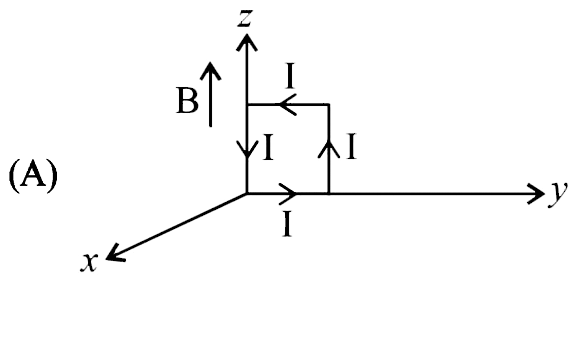



View SolutionA rectangular loop of sides 10 cm and 5 cm carrying a current 1 of 12 A is placed in different orientations as shown in the figures below :
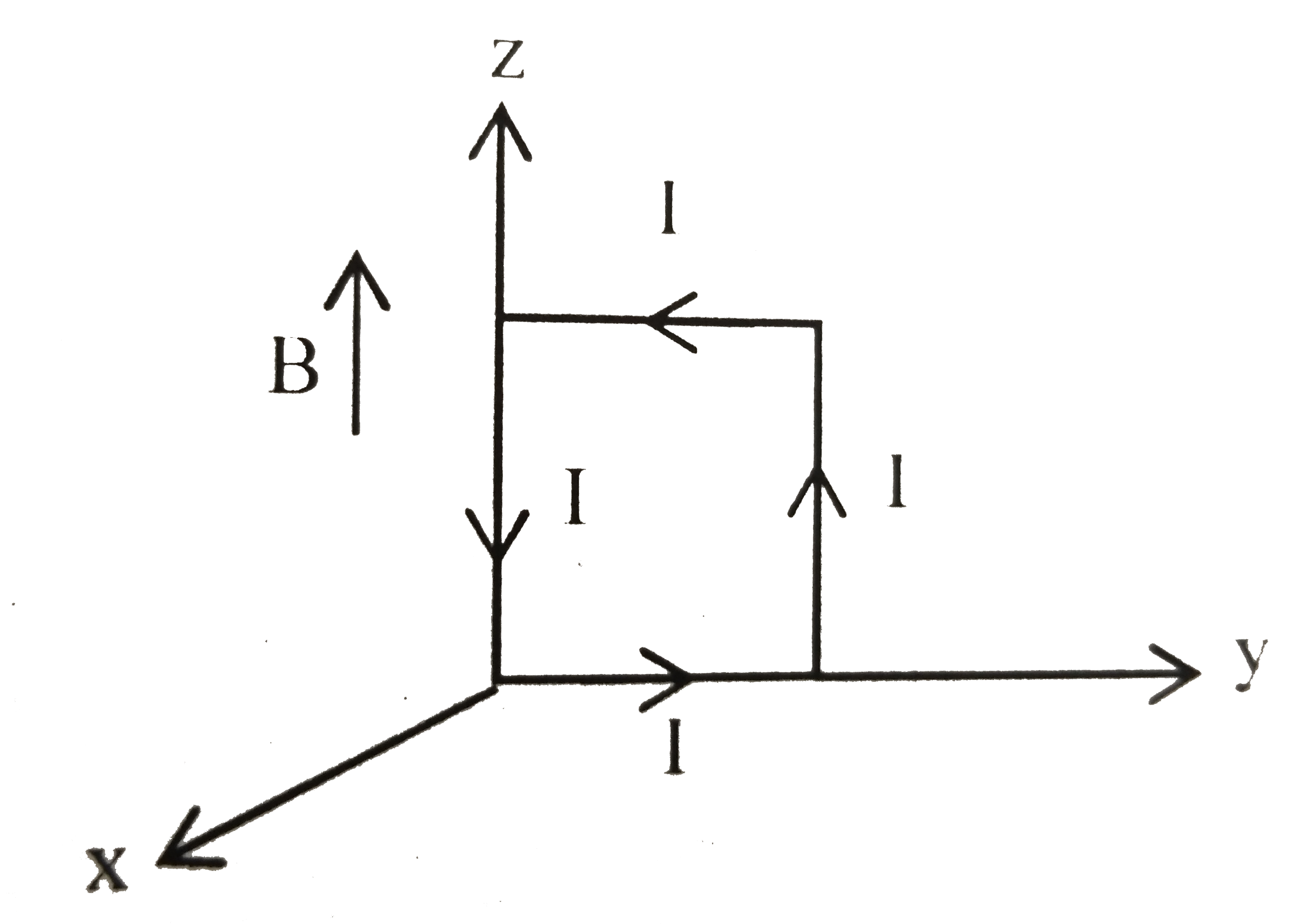

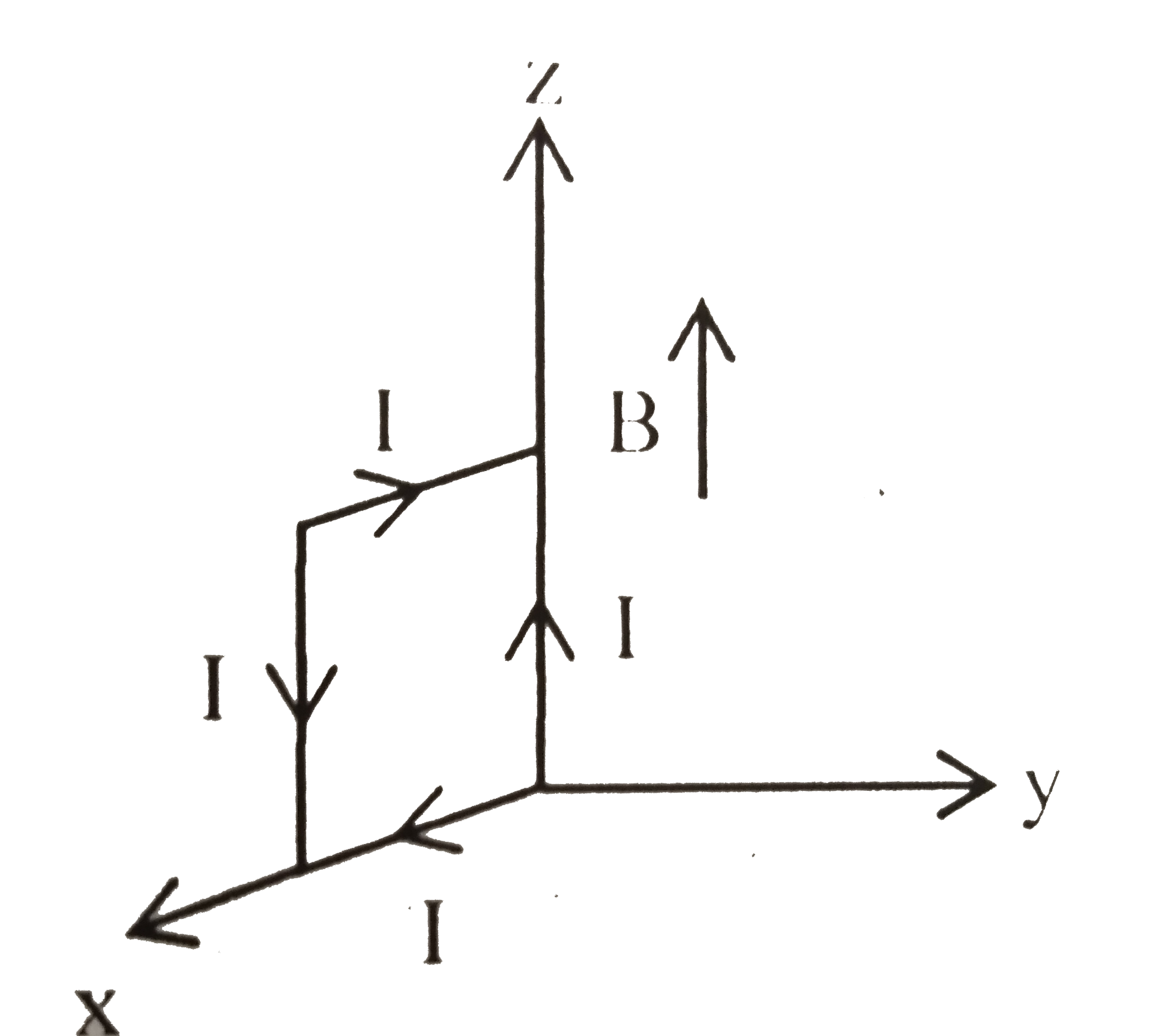
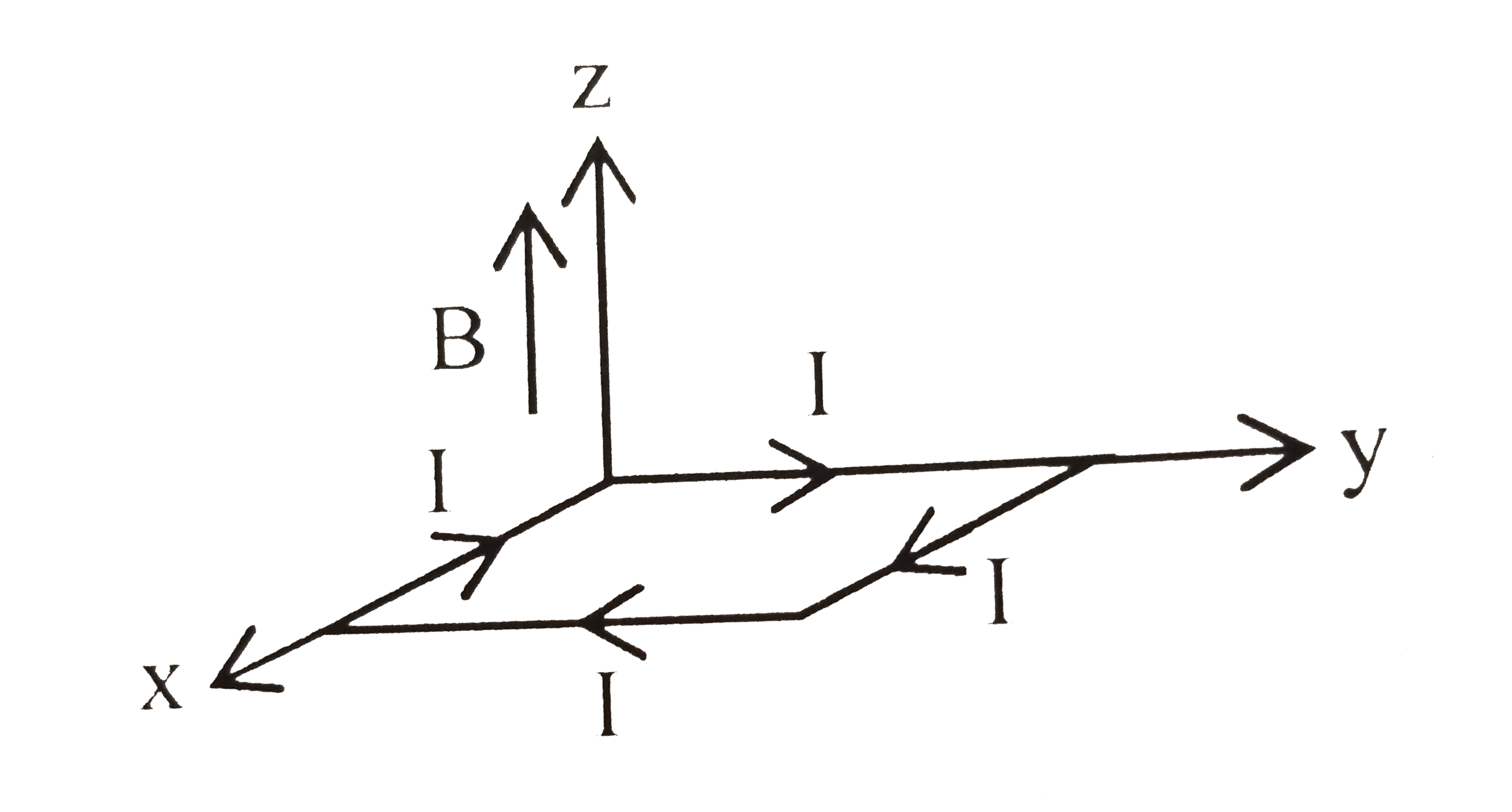 ltBrgt If there is a uniform magnetic field of 0.3 T in the positive z direction, in which orientations the loop would be in (i) stable equilibrium ?
ltBrgt If there is a uniform magnetic field of 0.3 T in the positive z direction, in which orientations the loop would be in (i) stable equilibrium ?
View Solution
Knowledge Check
A rectangular loop of sides 10 cm and 5 cm carrying a current I of 12 A is placed in different orientations as shown in the figures below ,
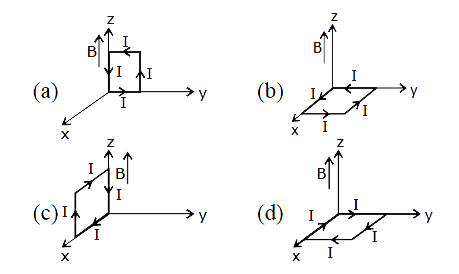
If there is a uniform magnetic field of 0.3 T in the positive z direction, in which orientations the loop would be in (i) stable equilibrium and (ii) unstable equilibrium ?A(b) and (d), respectivelyB(b) and (c), respectivelyC(a) and (b), respectivelyD(a) and (c), respectivelyA rectangular loop of sides 10cmand5cm carrying a current 1of12A is placed in different orientations as shown in the figure below:
If there is auniform magnetic field of 0.3t in the positive z direction , in which orientations the loop would be in (i) stable equilibrium and (ii) unstable equilibrium ?



 A(B)and(D) , respectivelyB(B)and(C) , respectivelyC(A)and(B) , respectivelyD(A)and(C) , respectively
A(B)and(D) , respectivelyB(B)and(C) , respectivelyC(A)and(B) , respectivelyD(A)and(C) , respectivelyA rectangular loop of sides 10cm and 5cm carrying a current I of 12A is placed in different orienctations as shown in the figure
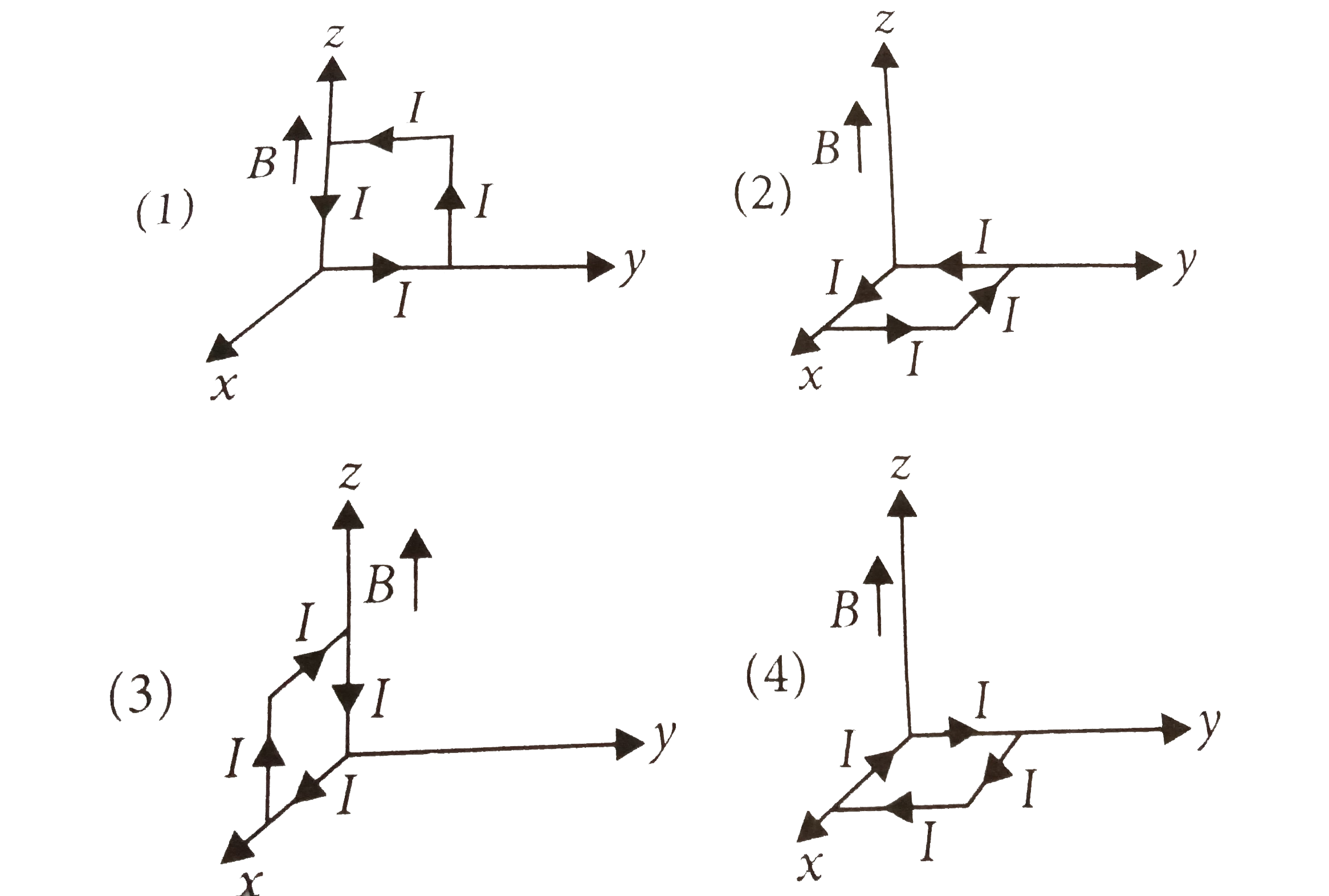
If there is a uniform magnetic field of 0.3 T in the positive z-direction, in which orientations the loop would be in (i) stable equilibrium and (ii) unstable equilibrium .A(2)and(4), respectivelyB(2)and(3), respectivelyC(1)and(2), respectivelyD(1)and(3), respectively
A rectangular loop of sides 10 cm and 5 cm carrying a current 1 of 12 A is placed in different orientations as shown in the figures below :



 ltBrgt If there is a uniform magnetic field of 0.3 T in the positive z direction, in which orientations the loop would be in (i) stable equilibrium ?
ltBrgt If there is a uniform magnetic field of 0.3 T in the positive z direction, in which orientations the loop would be in (i) stable equilibrium ?
View SolutionA rectangular loop of length 10 cm and 8 cm is carrying current of 10 A placed in X-Y plane as shown in adjoining figure. Calculate the torque on the loop if uniform magnetic field of0.2 T is directed along positive Z-direction.
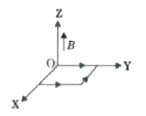
View SolutionA rectangular loop of sides 27cm×12cm carries a current of 12A. It is placed with its longer side parallel to the long straight conductor 3⋅0cm apart and carrying a current of 20A. Figure. (i) Find the net force on the loop (ii) What will be the net force on the loop if the current in the loop be reversed?
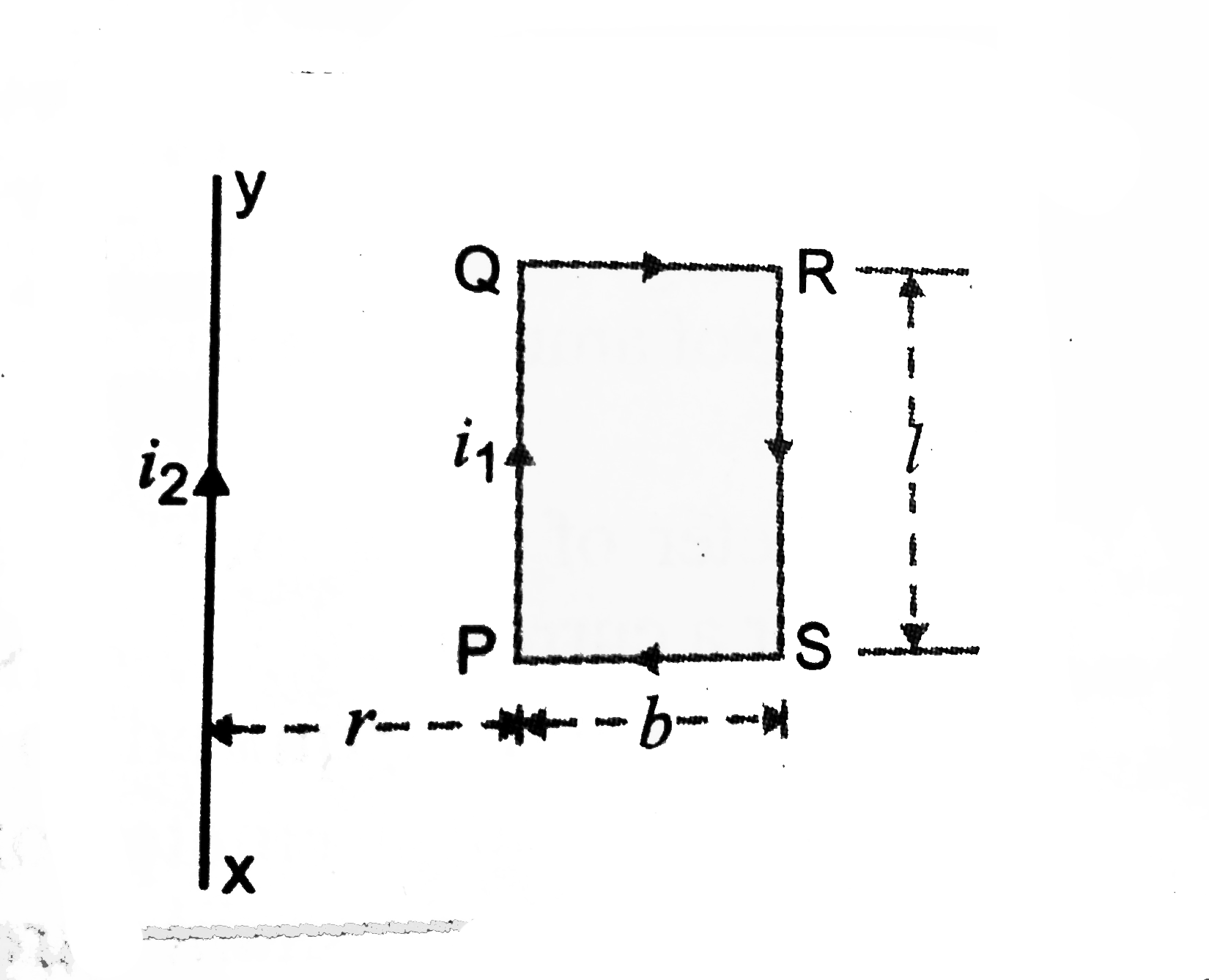
View SolutionA rectangular loop of sides 10cm and 5cm carrying a current I of 12A is placed in different orienctations as shown in the figure

If there is a uniform magnetic field of 0.3 T in the positive z-direction, in which orientations the loop would be in (i) stable equilibrium and (ii) unstable equilibrium .
View SolutionA rectangular loop of sides 20cm and 10cm carries a current of 5.0A. A uniform magnetic field of magnitude 2T exists parallel to the longer side of the loop. The torque acting on the loop is
View Solution
